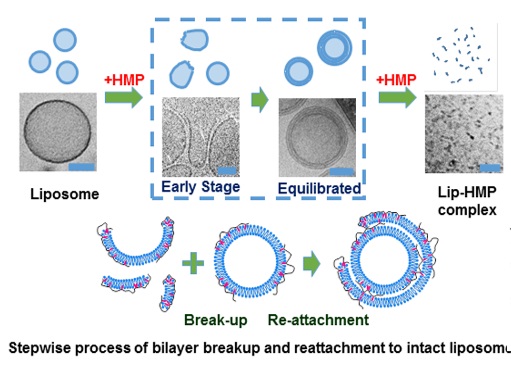Research Highlights
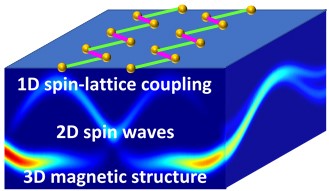 “Anomalous magnetic behavior of Ba2CoO4 with isolated CoO4 tetrahedra” by Qiang Zhang et al. has been published in Physical Review B. The dimensionality of the electronic and magnetic structure of a given material
is generally predetermined by its crystal structure. Here, using elastic and inelastic
neutron scattering combined with magnetization measurements, we find unusual magnetic
behavior in three-dimensional (3D) Ba2CoO4. In spite of isolated CoO4 tetrahedra, the system exhibits a 3D noncollinear antiferromagnetic order in the
ground state with an anomalously large Curie-Weiss temperature of 110 K compared to
TN = 26 K. More unexpectedly, spin dynamics display quasi-2D spin wave dispersion with
an unusually large spin gap and 1D magnetoelastic coupling. Our results indicate that
Ba2CoO4 is a unique system for exploring the interplay between isolated polyhedra, low-dimensional
magnetism, and novel spin states in oxides.
“Anomalous magnetic behavior of Ba2CoO4 with isolated CoO4 tetrahedra” by Qiang Zhang et al. has been published in Physical Review B. The dimensionality of the electronic and magnetic structure of a given material
is generally predetermined by its crystal structure. Here, using elastic and inelastic
neutron scattering combined with magnetization measurements, we find unusual magnetic
behavior in three-dimensional (3D) Ba2CoO4. In spite of isolated CoO4 tetrahedra, the system exhibits a 3D noncollinear antiferromagnetic order in the
ground state with an anomalously large Curie-Weiss temperature of 110 K compared to
TN = 26 K. More unexpectedly, spin dynamics display quasi-2D spin wave dispersion with
an unusually large spin gap and 1D magnetoelastic coupling. Our results indicate that
Ba2CoO4 is a unique system for exploring the interplay between isolated polyhedra, low-dimensional
magnetism, and novel spin states in oxides.
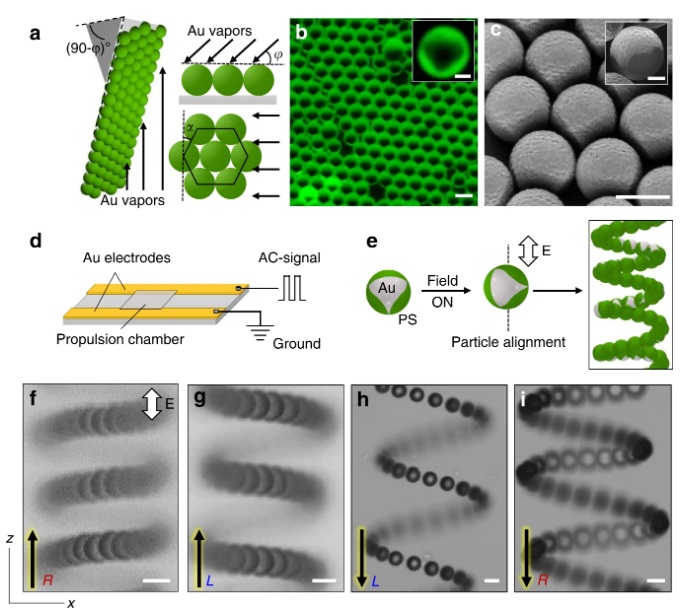 Nature Communications published "Directed propulsion of spherical particles along three dimensional helical trajectories" as an open access article in June 2019. Active colloids are a class of microparticles
that ‘swim’ through fluids by breaking the symmetry of the force distribution on their
surfaces. Spherical colloids with metal patches of low symmetry self-propel along
non-linear 3D trajectories when powered remotely by an alternating current (AC) electric
field. Helical motion can enhance particle transport through porous materials with
implications for the design of microrobots that can navigate complex environments.
Nature Communications published "Directed propulsion of spherical particles along three dimensional helical trajectories" as an open access article in June 2019. Active colloids are a class of microparticles
that ‘swim’ through fluids by breaking the symmetry of the force distribution on their
surfaces. Spherical colloids with metal patches of low symmetry self-propel along
non-linear 3D trajectories when powered remotely by an alternating current (AC) electric
field. Helical motion can enhance particle transport through porous materials with
implications for the design of microrobots that can navigate complex environments.
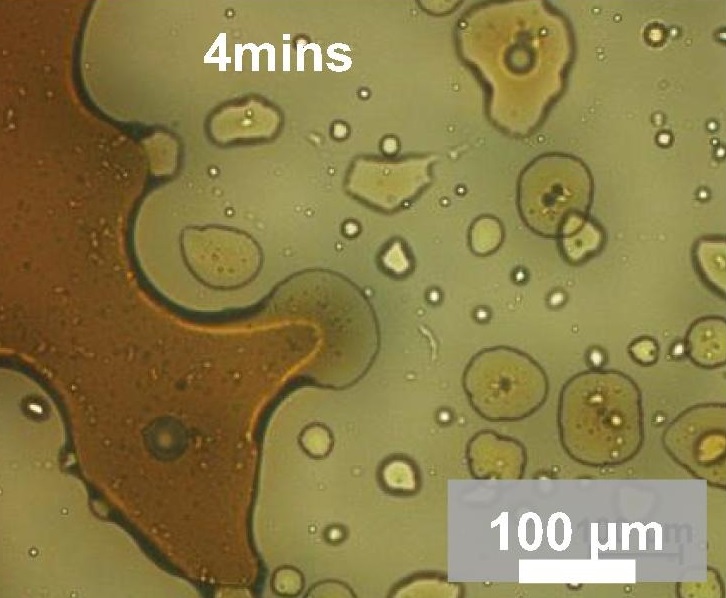 "Microstructural characteristics of surfactant assembly into a gel-like mesophase
for application as an oil spill dispersant" by Owoseni, et al. has been published by Journal of Colloid and Interface Science. The research showed that polyoxyethylene (20) sorbitan monooleate (Tween 80) can
be incorporated into the gel-like phase formed by L-α-phosphatidylcholine (PC) and
dioctyl sulfosuccinate sodium salt (DOSS) for potential application as a gel-like
dispersant for oil spill treatment. Such gel-like dispersants offer advantages over
existing liquid dispersants for mitigating oil spill impacts. Read more in GoMRI research highlight
"Microstructural characteristics of surfactant assembly into a gel-like mesophase
for application as an oil spill dispersant" by Owoseni, et al. has been published by Journal of Colloid and Interface Science. The research showed that polyoxyethylene (20) sorbitan monooleate (Tween 80) can
be incorporated into the gel-like phase formed by L-α-phosphatidylcholine (PC) and
dioctyl sulfosuccinate sodium salt (DOSS) for potential application as a gel-like
dispersant for oil spill treatment. Such gel-like dispersants offer advantages over
existing liquid dispersants for mitigating oil spill impacts. Read more in GoMRI research highlight
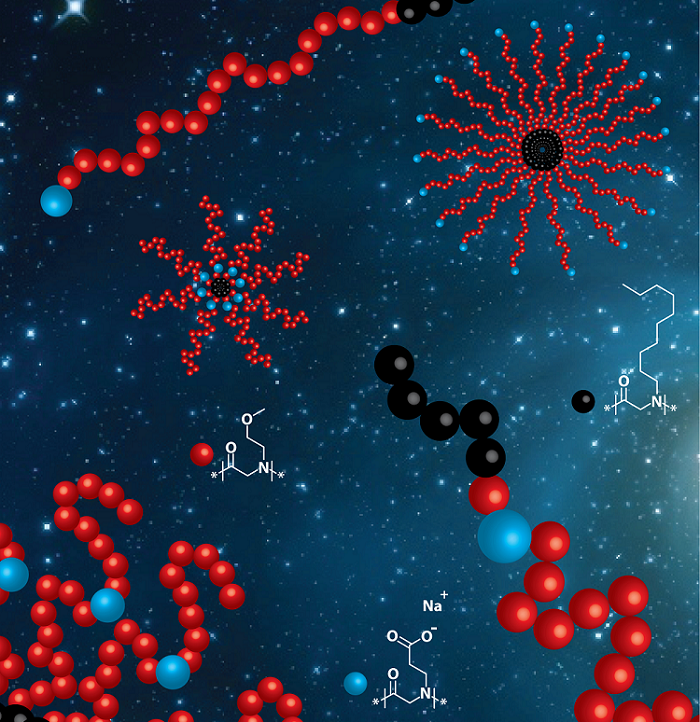 Sternhagen, Gupta, Y. Zhang, John, Schneider and D. Zhang published "Solution Self-Assemblies of Sequence-Defined Ionic Peptoid Block Copolymers" in Journal of the American Chemical Society in March 2018. Ionic micellar assemblies have a variety of applications ranging from
biomedicine (e.g., drug delivery) to sustainable energy (e.g., membrane for electrochemical
systems). Funded by DOE, LaCNS researchers have investigated and demonstrated that
the structure of micellar assemblies can be precisely controlled by encoding the electrostatic
interactions in the sequence of the polymer chains.
Sternhagen, Gupta, Y. Zhang, John, Schneider and D. Zhang published "Solution Self-Assemblies of Sequence-Defined Ionic Peptoid Block Copolymers" in Journal of the American Chemical Society in March 2018. Ionic micellar assemblies have a variety of applications ranging from
biomedicine (e.g., drug delivery) to sustainable energy (e.g., membrane for electrochemical
systems). Funded by DOE, LaCNS researchers have investigated and demonstrated that
the structure of micellar assemblies can be precisely controlled by encoding the electrostatic
interactions in the sequence of the polymer chains.
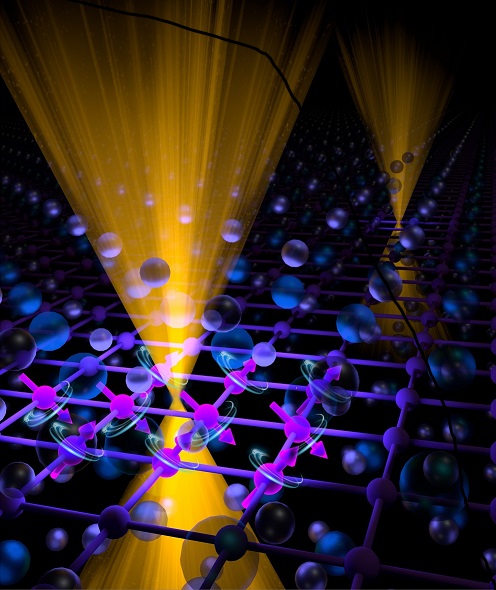 "A magnetic topological semimetal Sr1−yMn1−zSb2 (y, z < 0.1)" by Jinyu Liu, et al. has been published online in Nature Materials. Led by Professor Zhiqiang Mao, LaCNS researchers at Tulane University and LSU, in
collaboration with scientists from Oak Ridge National Laboratory, National High Magnetic
Field Laboratory at both Tallahassee and Los Alamos, and the Chinese Academy of Sciences,
discovered a new magnet with nearly massless charge carriers. This observation of
topological behavior in Sr1-yMn1-zSb2 (y, z < 0.1), where charge-carrying electrons behave as if they have no mass, suggests
that it may be an example of the long sought after Weyl semimetal caused by time-reversal
symmetry breaking. The recent discoveries of topological materials — a new class of
relativistic quantum materials — hold great promise for use in energy saving electronics. Read
more in DOE research highlight or ORNL Neutron Sciences
"A magnetic topological semimetal Sr1−yMn1−zSb2 (y, z < 0.1)" by Jinyu Liu, et al. has been published online in Nature Materials. Led by Professor Zhiqiang Mao, LaCNS researchers at Tulane University and LSU, in
collaboration with scientists from Oak Ridge National Laboratory, National High Magnetic
Field Laboratory at both Tallahassee and Los Alamos, and the Chinese Academy of Sciences,
discovered a new magnet with nearly massless charge carriers. This observation of
topological behavior in Sr1-yMn1-zSb2 (y, z < 0.1), where charge-carrying electrons behave as if they have no mass, suggests
that it may be an example of the long sought after Weyl semimetal caused by time-reversal
symmetry breaking. The recent discoveries of topological materials — a new class of
relativistic quantum materials — hold great promise for use in energy saving electronics. Read
more in DOE research highlight or ORNL Neutron Sciences
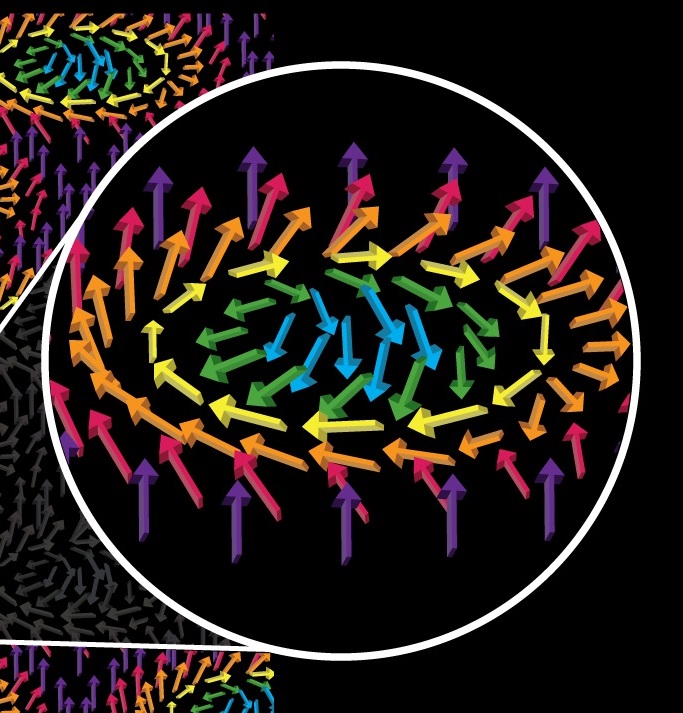 “Effect of negative chemical pressure on the prototypical itinerant magnet MnSi” by Dhital, Khan, Saghayezhian, Phelan, Young, Jin, and DiTusa has been published in Physical Review B, Volume 95. This work demonstrates how the magnetic properties of an itinerant magnetic
metal MnSi can be tuned by simple chemical substitution on a nonmagnetic Si site.
The substitution of Al and Ga on Si site creates negative chemical pressure which
gives the magnetism a stronger itinerant character. The substitution also increases
the range of temperature and field where the skyrmion phase is stable due to a change
in the character of the magnetism. Read more in DOE research highlight or DOE Newswise
“Effect of negative chemical pressure on the prototypical itinerant magnet MnSi” by Dhital, Khan, Saghayezhian, Phelan, Young, Jin, and DiTusa has been published in Physical Review B, Volume 95. This work demonstrates how the magnetic properties of an itinerant magnetic
metal MnSi can be tuned by simple chemical substitution on a nonmagnetic Si site.
The substitution of Al and Ga on Si site creates negative chemical pressure which
gives the magnetism a stronger itinerant character. The substitution also increases
the range of temperature and field where the skyrmion phase is stable due to a change
in the character of the magnetism. Read more in DOE research highlight or DOE Newswise
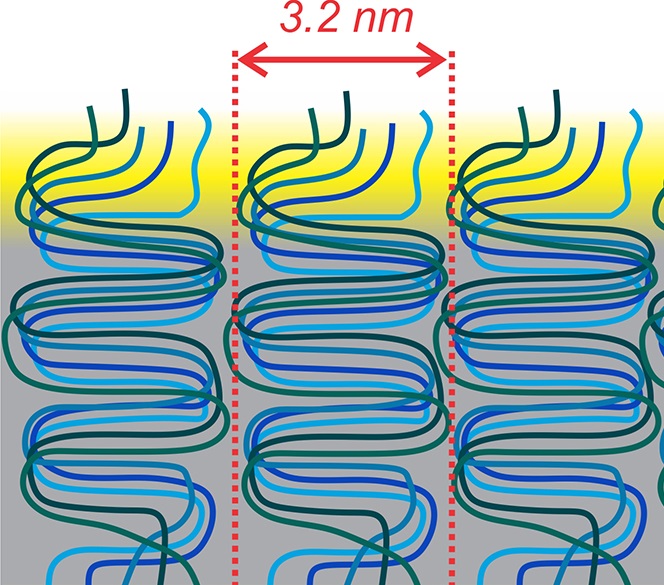 Developing Polythiophene Thin Films by Surface-Initiated Polymerization
Developing Polythiophene Thin Films by Surface-Initiated Polymerization
A team led by scientists at Louisiana State University has developed a “bottom-up” approach using surface-initiated growth of a semiconducting polymer called polythiophene to prepare thin films. These semiconducting polymer films have a unique structure and are highly stable. The films could increase efficiency and lifetime of organic light-emitting devices and solar cells. The research was funded by LaCNS through its grant from the U.S. Department of Energy and the Louisiana Board of Regents. LSU Now article
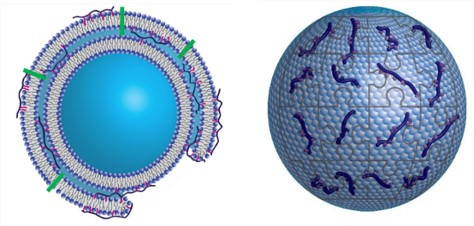 LSU and Tulane Researchers Synthesize New Class of Compounds
LSU and Tulane Researchers Synthesize New Class of Compounds
Researchers at LSU and Tulane have synthesized a new class of compounds called Hydrophobically Modified Polypeptoids (HMPs), which act as protein mimics and are entirely biocompatible. Donghui Zhang (LSU), Vijay John (Tulane), Sunting Xuan (LSU), and Yueheng Zhang (Tulane) filed an application with the U.S. Patent and Trademark Office titled “Hydrophobically Modified Polypeptoids as Lipid Based Drug Delivery Agents and as Microbials.”


Cyclic Polymers Form Dynamic Clusters in Solution
LaCNS researchers answered the question of whether cyclic peptoids (a class of biomimetic polymers) with oppositely charged end-groups can aggregate in solution and why.
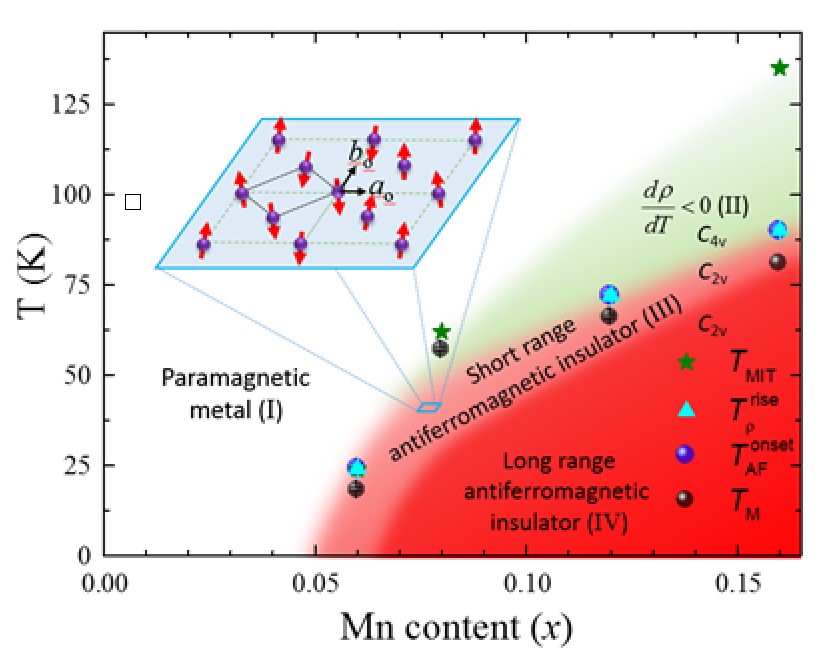 “Mn-induced magnetic symmetry breaking and its correlation with the metal-insulator
transition in bilayer Sr3(Ru1-xMnx)2O7” by Q. Zhang, Ye, Tian, Cao, Chi, Mesa, Hu, Diao, Tennant, Jin, J. Zhang, and Plummer is published in Physical Review B, Volume 95 (rapid communication). Bilayered Sr3Ru2O7 is an unusual metamagnetic metal with inherently antiferromagnetic (AFM) and ferromagnetic
(FM) fluctuations. Partial substitution of Ru by Mn results in the establishment of
a metal-insulator transition (MIT) at TMIT and AFM ordering at TM in Sr3(Ru1-xMnx)2O7. Using elastic neutron scattering we investigated the effect of Mn doping on the
in-plane magnetic correlation lengths and its correlation to the MIT in Sr3(Ru1-xMnx)2O7 (x = 0.06 and 0.12). With increasing Mn doping (x) from 0.06 to 0.12, an evolution from an in-plane short-range to long-range antiferromagnetic
(AFM) ground state occurs. For both compounds, the magnetic ordering has a double-stripe
configuration, with the onset of correlation coinciding with the sharp rise in electrical
resistivity and specific heat. Since it does not induce a measurable lattice distortion,
the double-stripe magnetic order with anisotropic spin texture breaks symmetry from
a C4v crystal lattice to a C2v magnetic sublattice. These observations shed light on an age-old question regarding
the Slater versus Mott-type MIT.
“Mn-induced magnetic symmetry breaking and its correlation with the metal-insulator
transition in bilayer Sr3(Ru1-xMnx)2O7” by Q. Zhang, Ye, Tian, Cao, Chi, Mesa, Hu, Diao, Tennant, Jin, J. Zhang, and Plummer is published in Physical Review B, Volume 95 (rapid communication). Bilayered Sr3Ru2O7 is an unusual metamagnetic metal with inherently antiferromagnetic (AFM) and ferromagnetic
(FM) fluctuations. Partial substitution of Ru by Mn results in the establishment of
a metal-insulator transition (MIT) at TMIT and AFM ordering at TM in Sr3(Ru1-xMnx)2O7. Using elastic neutron scattering we investigated the effect of Mn doping on the
in-plane magnetic correlation lengths and its correlation to the MIT in Sr3(Ru1-xMnx)2O7 (x = 0.06 and 0.12). With increasing Mn doping (x) from 0.06 to 0.12, an evolution from an in-plane short-range to long-range antiferromagnetic
(AFM) ground state occurs. For both compounds, the magnetic ordering has a double-stripe
configuration, with the onset of correlation coinciding with the sharp rise in electrical
resistivity and specific heat. Since it does not induce a measurable lattice distortion,
the double-stripe magnetic order with anisotropic spin texture breaks symmetry from
a C4v crystal lattice to a C2v magnetic sublattice. These observations shed light on an age-old question regarding
the Slater versus Mott-type MIT.
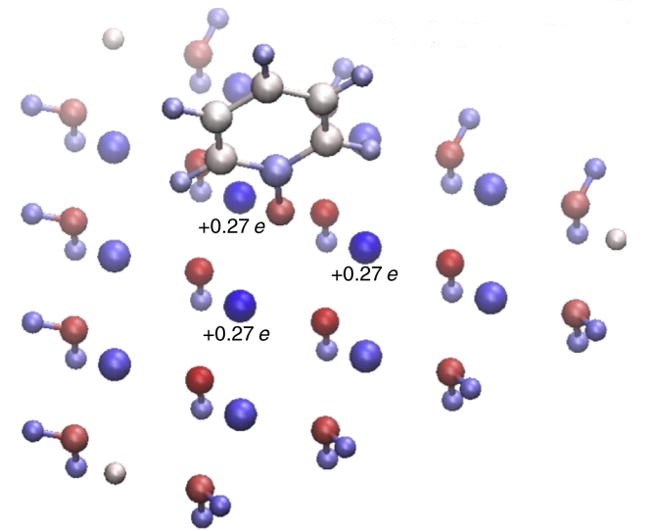 “Formation of environmentally persistent free radicals (EPFRs) on ZnO at room temperature:
Implications for the fundamental model of EPFR generation” by Patterson, M.F. DiTusa, McFerrin, Kurtz, Hall, Poliakoff, and Sprunger is published in Chem. Phys. Letters, Volume 670. Environmentally persistent free radicals (EPFRs) have significant environmental
and public health impacts. In this study, we demonstrate that EPFRs formed on ZnO
nanoparticles provide two significant surprises.
“Formation of environmentally persistent free radicals (EPFRs) on ZnO at room temperature:
Implications for the fundamental model of EPFR generation” by Patterson, M.F. DiTusa, McFerrin, Kurtz, Hall, Poliakoff, and Sprunger is published in Chem. Phys. Letters, Volume 670. Environmentally persistent free radicals (EPFRs) have significant environmental
and public health impacts. In this study, we demonstrate that EPFRs formed on ZnO
nanoparticles provide two significant surprises.
A new hydrophobically modified polypeptoid (HMP) was shown to induce morphological transition of liposome into multilamellar structures. This opens new research directions in the development of new materials and approaches for multi-drug encapsulation and delivery and transmembrane protein recovery.
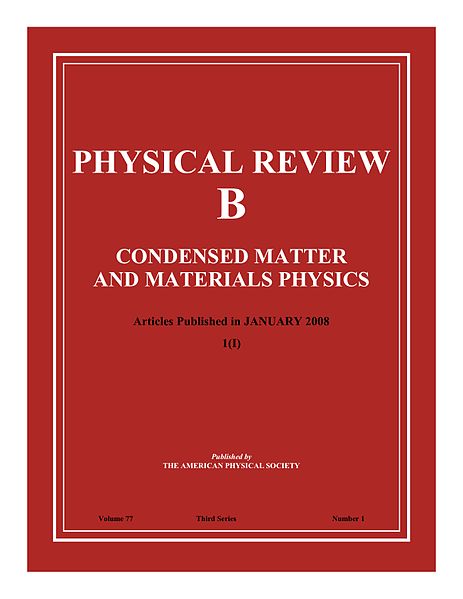 “Half-metallic ferromagnetism in Sr3Ru2O7” by Pablo Rivero, Vincent Meunier, and William Shelton is published in Physical Review B, Volume 95. The authors find that the ground-state of Sr3Ru2O7 is characterized by a ferromagnetic (FM) half-metallic state. This state strongly
competes with an antiferromagnetic metallic phase, which indicates the possible presence
of a particular state characterized by the existence of different magnetic domains.
The results provide accurate electronic, structure, and magnetic ground-state properties
of Sr3Ru2O7 and stimulate the investigation of other type of octahedra rotations and distortions
in the search of phase transitions.
“Half-metallic ferromagnetism in Sr3Ru2O7” by Pablo Rivero, Vincent Meunier, and William Shelton is published in Physical Review B, Volume 95. The authors find that the ground-state of Sr3Ru2O7 is characterized by a ferromagnetic (FM) half-metallic state. This state strongly
competes with an antiferromagnetic metallic phase, which indicates the possible presence
of a particular state characterized by the existence of different magnetic domains.
The results provide accurate electronic, structure, and magnetic ground-state properties
of Sr3Ru2O7 and stimulate the investigation of other type of octahedra rotations and distortions
in the search of phase transitions.
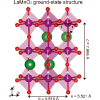 “Uniaxial pressure-induced half-metallic ferromagnetic phase transition in LaMnO3” by Pablo Rivero, Vincent Meunier, and William Shelton has been published in Physical Review B, Volume 93. The paper discusses the use of first-principles theory to predict that
the application of uniaxial compressive strain leads to a transition from an antiferromagnetic
insulator to a ferromagnetic half-metal phase in LaMnO3.
“Uniaxial pressure-induced half-metallic ferromagnetic phase transition in LaMnO3” by Pablo Rivero, Vincent Meunier, and William Shelton has been published in Physical Review B, Volume 93. The paper discusses the use of first-principles theory to predict that
the application of uniaxial compressive strain leads to a transition from an antiferromagnetic
insulator to a ferromagnetic half-metal phase in LaMnO3.
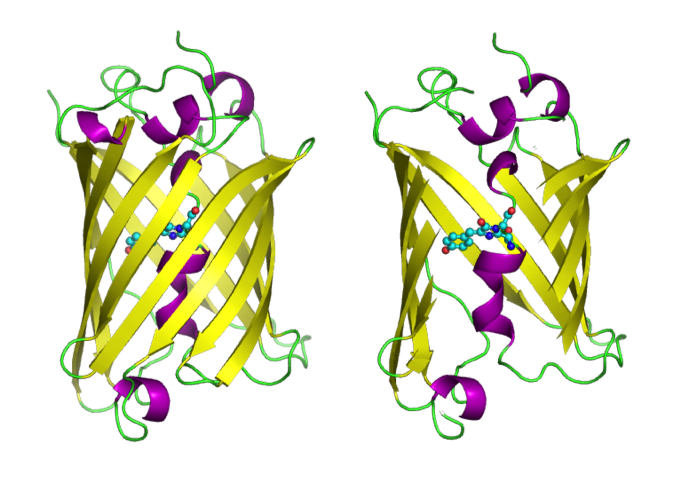 "Probing microhydration effect on the electronic structure of the GFP chromophore
anion." A substance squeezed from jellyfish has transformed modern cellular biology. The
substance is green fluorescent protein (GFP), which, when added to viruses and proteins,
brings their life and function into view. By combining experiment, computation, and
theory, scientists at Pacific Northwest National Laboratory and colleagues at Louisiana
State University have discovered new insights about GFP's behavior. This in turn can
lead to even more ways to exploit this valuable monitor of biological processes. Read PNNL research highlight
"Probing microhydration effect on the electronic structure of the GFP chromophore
anion." A substance squeezed from jellyfish has transformed modern cellular biology. The
substance is green fluorescent protein (GFP), which, when added to viruses and proteins,
brings their life and function into view. By combining experiment, computation, and
theory, scientists at Pacific Northwest National Laboratory and colleagues at Louisiana
State University have discovered new insights about GFP's behavior. This in turn can
lead to even more ways to exploit this valuable monitor of biological processes. Read PNNL research highlight
